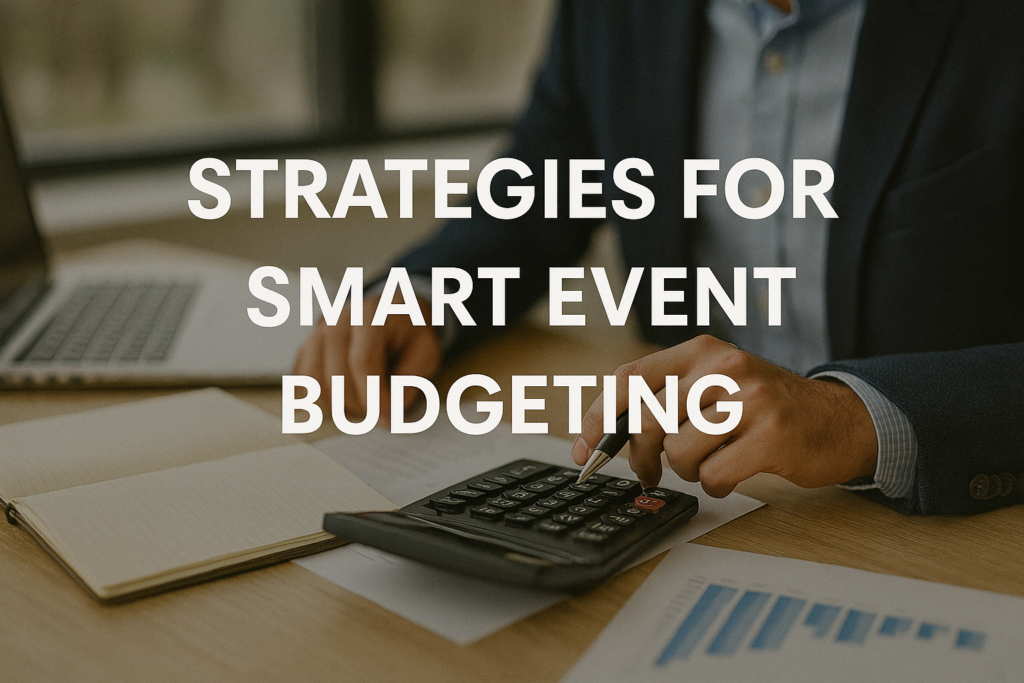
Corporate events are high-impact opportunities to engage employees, partners, and clients. But behind every successful event lies a strategic event budgeting plan. Whether you’re organizing a product launch, conference, or company offsite, knowing how to budget smartly can save you from overspending while still delivering an unforgettable experience.
Let’s explore the essential steps, tools, and best practices to master event budgeting for your next corporate event.
Why Is Event Budgeting Crucial?
Event budgeting isn’t just about cost control—it’s the blueprint for planning, execution, and ROI. A clear budget helps you:
- Allocate resources wisely
- Avoid last-minute surprises
- Make informed vendor decisions
- Measure event success effectively
Think of your budget as your financial compass. Without it, even the most creative ideas can lead to financial chaos.
Start with a Clear Objective
Before drafting a single rupee in your spreadsheet, clarify the event’s goal. Is it employee appreciation? Lead generation? Networking? The answer influences your spend across venues, speakers, catering, and more.
If the goal is high client engagement, you might prioritize ambiance and entertainment. For internal training events, AV equipment and workshop materials might take precedence.
Break Down Your Event Budget Format
A proper event budget format ensures you cover every detail. Use a spreadsheet or event planning software to categorize your expenses.
Here’s a basic format you can expand upon:
| Category | Estimated Cost (₹) | Actual Cost (₹) | Notes |
| Venue Rental | 1,00,000 | Based on 1-day booking | |
| Catering | 1,50,000 | ₹1,500 per head × 100 guests | |
| AV Equipment | 50,000 | Includes sound + lighting | |
| Decorations & Branding | 40,000 | Banners, signage, photo booth | |
| Speaker/Entertainment | 75,000 | Includes travel/honorarium | |
| Marketing & Promotion | 60,000 | Online + offline materials | |
| Staffing & Security | 30,000 | Hired support + uniform | |
| Miscellaneous/Emergency | 25,000 | Always reserve 5-10% |
Make sure to track both estimates and actuals for every item—this helps for future forecasting and post-event analysis.
Use an Event Budgeting Example for Reference
Let’s say you’re planning a mid-scale, one-day corporate seminar in Mumbai for 100 attendees.
Example Summary:
- Venue: ₹1,00,000 at a 3-star hotel ballroom
- Catering: ₹1,50,000 for buffet lunch and evening snacks
- Speaker Fees: ₹50,000 (including travel)
- Printing Materials: ₹10,000 for brochures and badges
- Marketing: ₹60,000 (digital ads, email campaigns)
- Miscellaneous: ₹30,000 buffer
Total Estimated Budget: ₹4,00,000
This is a mid-range example. Your actuals will vary based on city, audience size, and luxury level.
Prioritize Must-Haves vs. Nice-to-Haves
Every rupee counts. Create two lists:
- Must-Haves: Venue, food, seating, speakers
- Nice-to-Haves: Live music, photo booths, custom gifts
If the budget tightens, you know where to trim.
Get Multiple Vendor Quotes
Never settle on the first quote. Contact at least three vendors for each service—venue, catering, entertainment—to compare value, packages, and hidden costs.
Don’t forget to negotiate! Most vendors have a buffer and can offer discounts for referrals or early payments.
Consider Hidden & Overlooked Costs
It’s easy to overlook taxes, transportation, overtime charges, and gratuities. These can add up to 15–20% of your total budget if not accounted for.
Always reserve a contingency buffer of 5–10%.
Leverage Sponsorships or Partnerships
Invite brands, media, or partners to sponsor parts of the event (e.g., refreshments, swag bags). In exchange, offer logo visibility or speaking time.
This tactic can offset major costs and enhance networking opportunities.
Track & Review Your Budget Regularly
Budgeting isn’t a one-time task. Update your sheet weekly—or even daily—during the active planning phase. Use tools like:
- Google Sheets (real-time collaboration)
- Trello + Budget Plugins
- Event management software like Cvent or Bizzabo
Post-Event Analysis: What Did You Learn?
After the event, compare estimated vs. actual costs. Where did you overspend? What can you optimize for next time?
This review process transforms your budget from a one-off document to a living playbook for future events.
Final Thoughts on Event Budgeting
Effective event budgeting blends foresight, flexibility, and financial discipline. By using a structured event budget format and learning from every event budgeting example, you not only avoid overspending—you build a repeatable process that makes every event smoother, smarter, and more successful.
Whether it’s your first event or your fiftieth, your budget will be the silent powerhouse behind the scenes.
FAQs
What’s the ideal budget for a corporate event in India?
It varies! Small events may cost ₹1–2 lakh, while large-scale conferences can go beyond ₹10 lakh.
What is a common mistake in event budgeting?
Forgetting to include taxes, emergency expenses, or logistics like transportation and parking.
Can I manage event budgeting without software?
Yes, basic events can be managed via spreadsheets, but larger ones benefit from event-specific tools.
How much should I allocate to contingency?
Set aside 5–10% of the total estimated budget to handle surprises.
How do I ensure vendor transparency in pricing?
Ask for itemized quotes and always check for hidden charges in contracts.Is it okay to negotiate with event vendors?
Absolutely. Many vendors expect it and offer discounts for repeat business or referrals.

